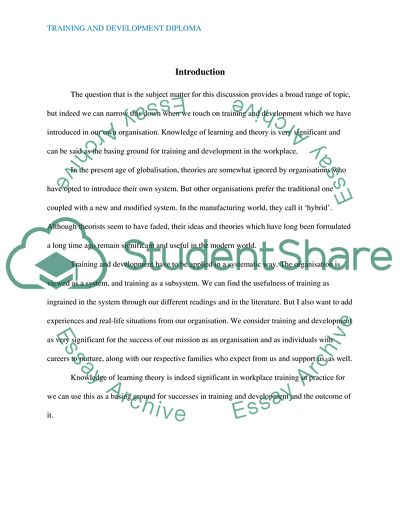Cite this document
(The Learning Process and the Practice of Training and Development Assignment - 1, n.d.)
The Learning Process and the Practice of Training and Development Assignment - 1. Retrieved from https://studentshare.org/human-resources/1748807-human-resources-management-the-learning-process-and-practice-of-training-development
The Learning Process and the Practice of Training and Development Assignment - 1. Retrieved from https://studentshare.org/human-resources/1748807-human-resources-management-the-learning-process-and-practice-of-training-development
(The Learning Process and the Practice of Training and Development Assignment - 1)
The Learning Process and the Practice of Training and Development Assignment - 1. https://studentshare.org/human-resources/1748807-human-resources-management-the-learning-process-and-practice-of-training-development.
The Learning Process and the Practice of Training and Development Assignment - 1. https://studentshare.org/human-resources/1748807-human-resources-management-the-learning-process-and-practice-of-training-development.
“The Learning Process and the Practice of Training and Development Assignment - 1”, n.d. https://studentshare.org/human-resources/1748807-human-resources-management-the-learning-process-and-practice-of-training-development.


